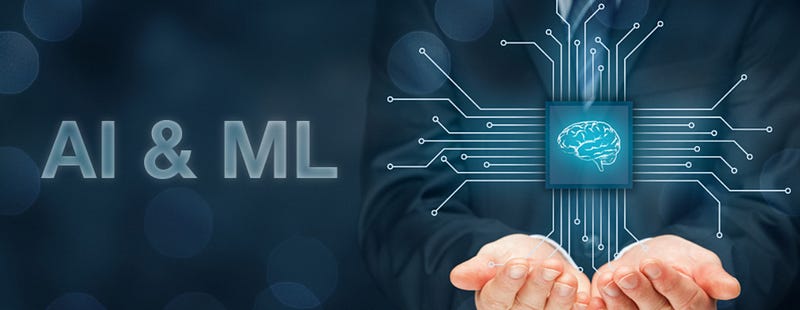Leveraging AI and ML in Engineering: Transforming Industries
Artificial Intelligence (AI) and Machine Learning (ML) are revolutionary technologies with the potential to transform the field of engineering. This article will explore how they’re reshaping industries and engineering practices unimaginably. The synergy between engineering and AI/ML creates unprecedented opportunities for efficiency, cost reduction, and innovation.

Why AI and ML in Engineering?
Traditionally, engineering has been characterized by meticulous planning, precise execution, and a deep understanding of physical principles. However, as the complexity of systems and data continues to grow, engineering is at a juncture where it can greatly benefit from AI and ML’s capabilities.
AI refers to computer systems capable of performing tasks that typically require human intelligence. ML, a subset of AI, focuses on developing algorithms to learn from and make predictions or decisions based on data. When applied in engineering, these technologies can make processes smarter, more efficient, and more reliable.
The Transformative Power of AI and ML
Integrating AI and ML into engineering is not a mere technological shift; it’s a transformative wave. These technologies are enhancing engineers’ capabilities, allowing them to predict equipment failures, optimize processes, and perform previously impossible tasks.
AI and ML are enabling engineering in several key ways:
- Predictive Maintenance and Reliability: AI can analyze data from sensors and historical maintenance records to predict when equipment might fail. This predictive capability reduces downtime, prevents costly breakdowns, and extends the lifespan of machinery.
- Process Optimization: ML algorithms can continuously analyze and optimize complex industrial processes, leading to increased efficiency, reduced resource consumption, and improved product quality.
- Computer Vision (CV): CV is transforming quality control in manufacturing. Automated inspection systems can detect defects with unprecedented accuracy, improving product quality and reducing waste.
The Journey Ahead
As we delve deeper into AI and ML’s impact on engineering, we’ll explore specific applications, case studies, and challenges. The possibilities are vast, from enhancing sustainability and green engineering to enabling autonomous systems in various industries.
This presentation is not just about showcasing the current state of affairs but also about inspiring future innovation. The engineering community has an incredible opportunity to harness AI and ML’s transformative power to shape our industries’ future.
Join us on this journey as we unravel the dynamic relationship between AI, ML, and engineering and how it’s reshaping the world.
Predictive Maintenance and Reliability
Predictive maintenance, powered by AI and ML, is a game-changer for engineering. This innovative maintenance approach saves time and resources and enhances the overall reliability of systems and equipment. This section will delve into predictive maintenance and its impact on various industries.
Understanding Predictive Maintenance
Traditionally, maintenance activities were scheduled at regular intervals, regardless of the actual condition of the equipment. This approach could lead to unnecessary downtime, maintenance costs, and the replacement of unnecessary components. Predictive maintenance, in contrast, leverages the power of data and AI algorithms to make maintenance smarter and more efficient.
The core concept of predictive maintenance is simple: rather than replacing parts on a fixed schedule, you replace them when they need to be replaced. This “just-in-time” approach is made possible by continuously monitoring and analyzing equipment performance.
AI and Sensor Data
AI-driven predictive maintenance relies on data, especially data collected from sensors. Sensors are placed on equipment to monitor various parameters, such as temperature, pressure, vibration, etc. AI algorithms then analyze the data generated by these sensors.
Here’s how it works:
- Data Collection: Sensors collect data from the equipment in real time. This data includes information about the equipment’s performance, such as temperature, pressure, and wear and tear.
- Data Analysis: AI algorithms analyze this data to detect patterns, anomalies, and early signs of deterioration. The algorithms can learn from historical data to predict when maintenance is needed.
- Actionable Insights: When the AI system detects a potential issue, it can trigger alerts or work orders. Maintenance teams can then perform maintenance tasks proactively, addressing the issue before it leads to a breakdown.
Benefits of Predictive Maintenance
The advantages of predictive maintenance are far-reaching:
- Reduced Downtime: Equipment failures often result in costly downtime. Predictive maintenance can reduce downtime by fixing issues before they cause a breakdown.
- Cost Savings: Maintenance costs are significantly reduced by replacing parts only when necessary. This includes the cost of replacement parts and the labor and operational costs associated with unplanned downtime.
- Improved Reliability: Predictive maintenance leads to improved equipment reliability and longevity. By addressing issues early, the system’s overall lifespan is extended.
- Safety: Ensuring that equipment operates optimally is crucial for protecting operators and the surrounding environment. Predictive maintenance contributes to enhanced safety.
Real-World Examples
Several industries have embraced predictive maintenance with remarkable results:
- Manufacturing: Predictive maintenance in manufacturing reduces the risk of production line disruptions, ensuring smooth operations.
- Energy: Predictive maintenance helps prevent costly and potentially dangerous equipment failures in power plants and distribution systems.
- Aviation: Airlines use predictive maintenance to ensure the safety and reliability of their aircraft, reducing the likelihood of in-flight failures.
- Transportation: The transportation industry relies on predictive maintenance for trains, buses, and even self-driving cars to ensure the safety of passengers and cargo.
In the following sections, we will explore other applications of AI and ML in engineering, from optimizing complex industrial processes to using computer vision to enhance quality control in manufacturing.
Process Optimization
Optimizing industrial and engineering processes is a continuous pursuit to enhance efficiency, reduce waste, and improve product quality. AI and ML allow for fine-tuning these processes. In this section, we’ll delve into the transformative power of AI and ML in process optimization.
The Challenges of Complex Processes
Many engineering processes are inherently complex, involving numerous variables and parameters that interact non-linearly. Traditionally, process optimization has been a labor-intensive and time-consuming endeavor, often relying on heuristic rules and experimentation. AI and ML, however, offer a data-driven and more efficient approach.
AI for Process Optimization
Machine learning algorithms can analyze vast datasets, spot patterns, and learn from historical data. When applied to process optimization, ML can provide:
- Data-Driven Decision-Making: ML models can make real-time decisions based on the data they receive. They can adjust parameters and settings to continuously optimize the process.
- Predictive Modeling: ML algorithms can predict how process changes will impact outcomes. Engineers can use these predictions to fine-tune processes for optimal results.
- Anomaly Detection: ML can identify process anomalies that might lead to inefficiencies or defects, allowing for immediate corrective actions.
Benefits of AI-Driven Process Optimization
The benefits of AI and ML in process optimization are far-reaching:
- Increased Efficiency: ML can identify the most efficient process parameters, leading to reduced resource consumption and lower production costs.
- Improved Product Quality: Optimizing processes can minimize defects and variations, leading to higher-quality products.
- Reduced Human Error: Automating decision-making processes minimizes the potential for human error in process control.
Real-World Applications
AI-driven process optimization has made significant inroads in various industries:
- Manufacturing: Optimizing production processes to reduce waste and improve product consistency.
- Chemical Engineering: Fine-tuning chemical processes to maximize yield and minimize byproducts.
- Energy: Optimizing energy production and distribution for efficiency and cost savings.
- Supply Chain Management: Optimizing logistics and inventory management for better resource utilization.
- Pharmaceuticals: Optimizing drug manufacturing processes to improve yield and quality.
The ability to continuously monitor and adjust processes in real time with the aid of AI and ML represents a significant shift in how engineering industries operate. In the next section, we’ll explore another critical area where AI and ML transform engineering: computer vision in manufacturing for quality control.
Computer Vision in Manufacturing
Computer vision, a subset of artificial intelligence, has opened new frontiers in manufacturing by providing machines with the ability to interpret and understand visual information. This technology is transforming quality control and automation in ways previously considered science fiction. In this section, we’ll delve into the remarkable impact of computer vision on manufacturing.
The Power of Computer Vision
Computer vision empowers machines to analyze and interpret visual data, such as images and videos. When applied to manufacturing, this capability enables:
- Automated Inspection: Automated systems can visually inspect products, components, and materials with incredible speed and accuracy.
- Quality Control: Computer vision systems can identify defects, variations, and anomalies in products, ensuring consistent quality.
- Defect Detection: The technology can pinpoint even subtle defects that might escape human inspection, reducing the likelihood of faulty products reaching consumers.
How Computer Vision Works
Computer vision systems use cameras and sensors to capture visual data. AI algorithms then process this data to make decisions or trigger actions. This technology can be as simple as barcode readers or as complex as deep learning-based image recognition.
Benefits of Computer Vision in Manufacturing
The advantages of computer vision in manufacturing are numerous:
- Improved Quality: By detecting defects with unmatched precision, computer vision contributes to higher product quality and lower rates of customer returns.
- Automation: Automated inspection and quality control reduce the need for manual labor and can operate 24/7 without fatigue.
- Speed and Efficiency: Computer vision systems can inspect products at high speeds, ensuring that production lines move efficiently.
- Data and Analytics: The data collected by computer vision systems can be used for process improvement and analytics.
Real-World Applications
Computer vision is transforming various manufacturing industries:
- Automotive: Computer vision inspects vehicle components in the automotive sector, ensuring safety and quality.
- Electronics: Computer vision systems verify the quality of electronic components and printed circuit boards.
- Pharmaceuticals: Automated inspection of pharmaceutical products helps ensure the integrity and safety of medications.
- Food and Beverage: Computer vision detects contaminants or defects in food products, improving safety and quality.
- Aerospace: Critical components are meticulously inspected in the aerospace industry for precision and safety.
Computer vision is redefining how we approach quality control and automation in manufacturing.
Conclusion
Integrating AI and ML is revolutionizing engineering, offering unprecedented opportunities for efficiency, cost reduction, and innovation. This article explored the transformative impact of AI and ML in predictive maintenance, process optimization, computer vision, natural language processing, and healthcare engineering. The engineering community is at the forefront of harnessing the potential of AI and ML, shaping a future that is smarter, more efficient, and more reliable.
References and Additional Resources
- Predictive Maintenance for Industry 4.0: A Comprehensive Review
- Artificial Intelligence
- An Overview of AI Applications in Predictive Maintenance
- Industrial AI: A Guide to Industry 4.0
- Computer Vision Applications and Their Impact on AI
- A Cloud Architecture Design of Predictive Maintenance for CNC Machine Tools Based on MTConnect


